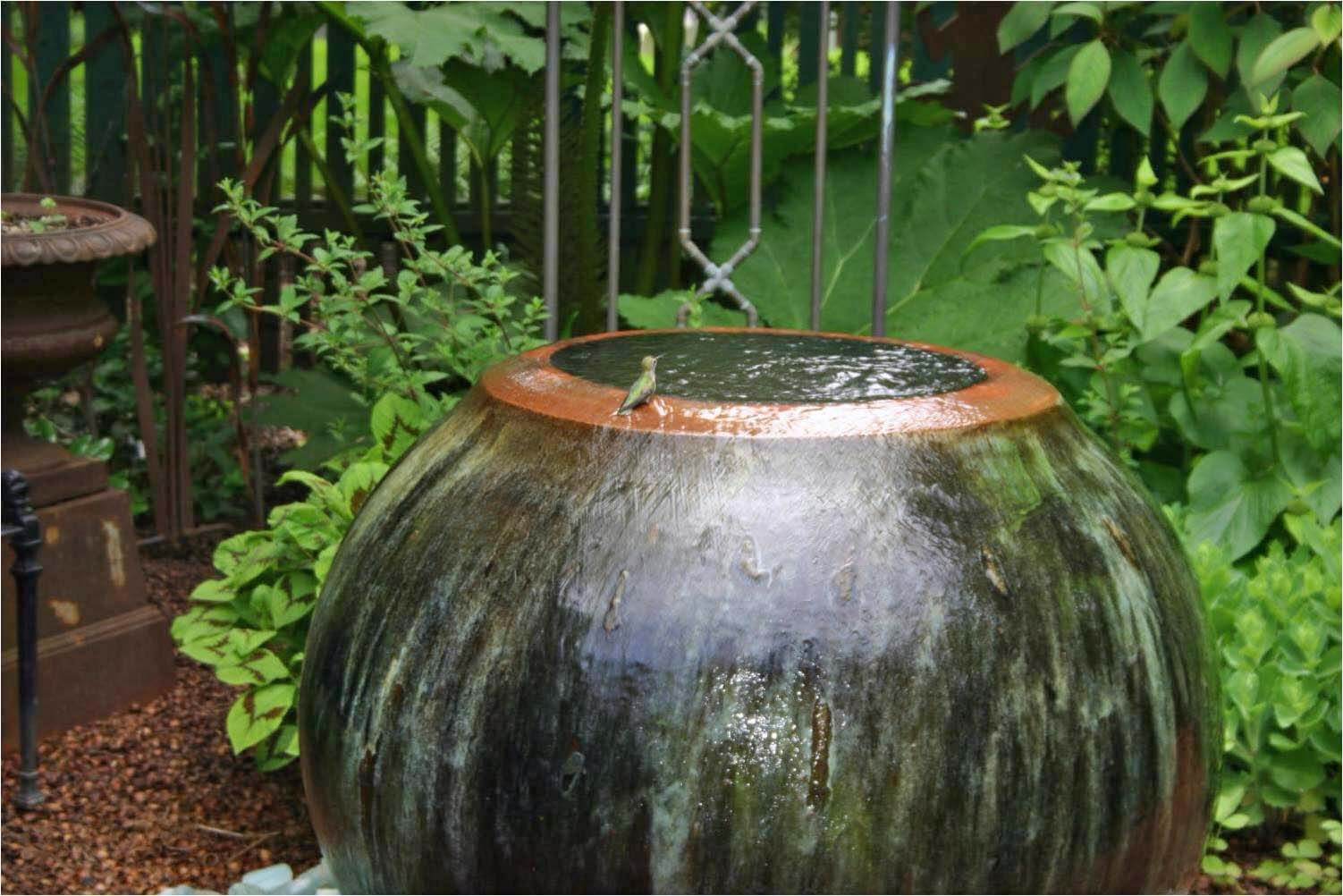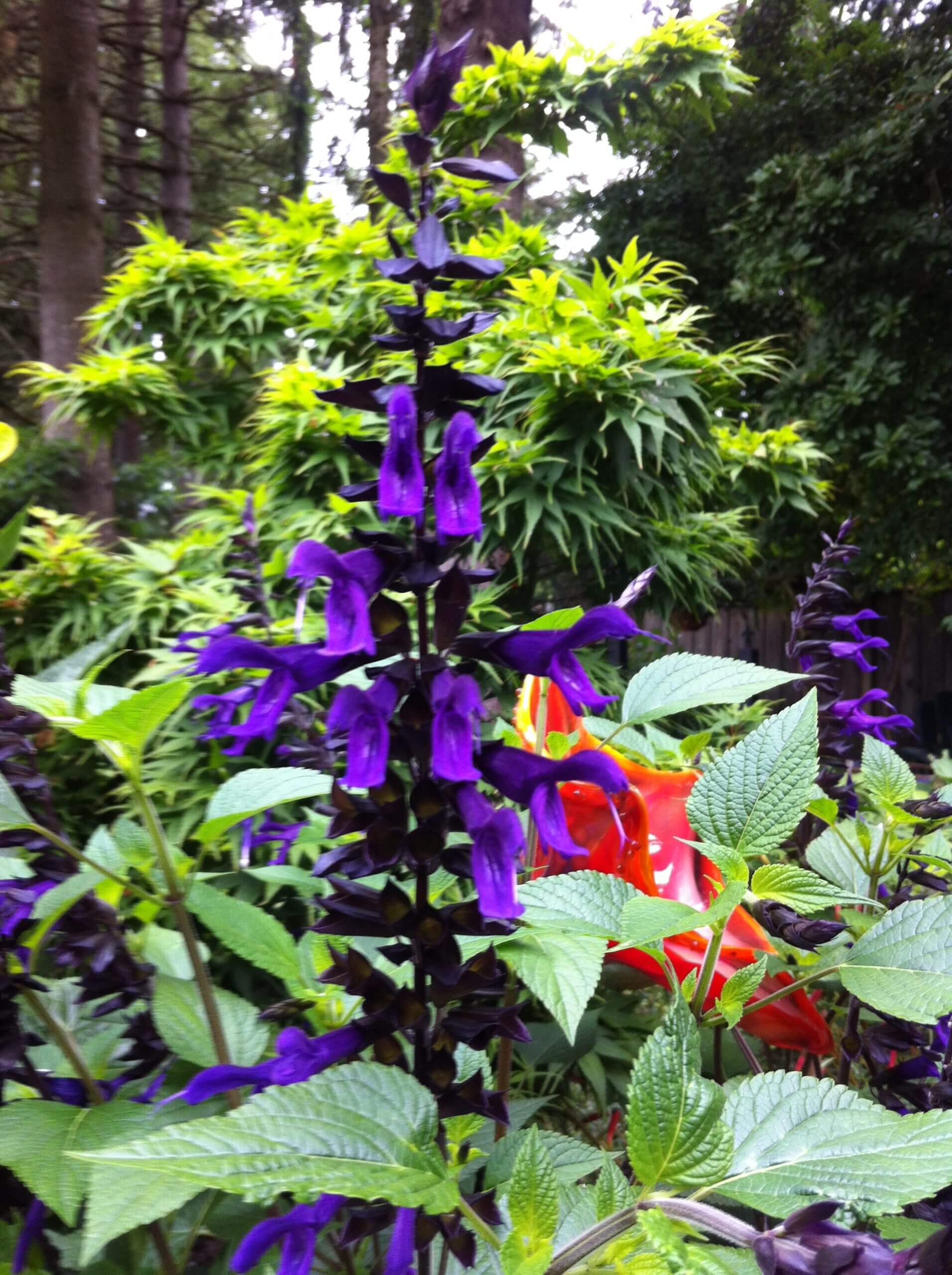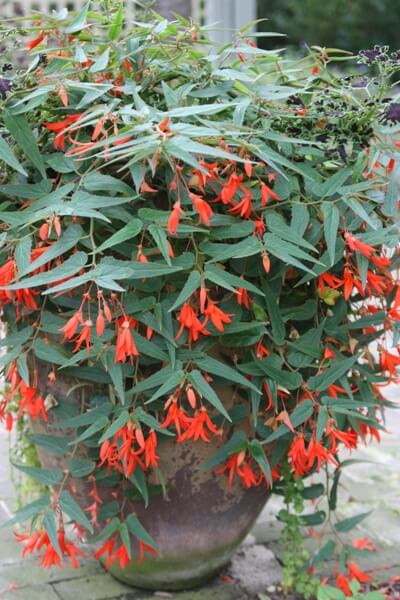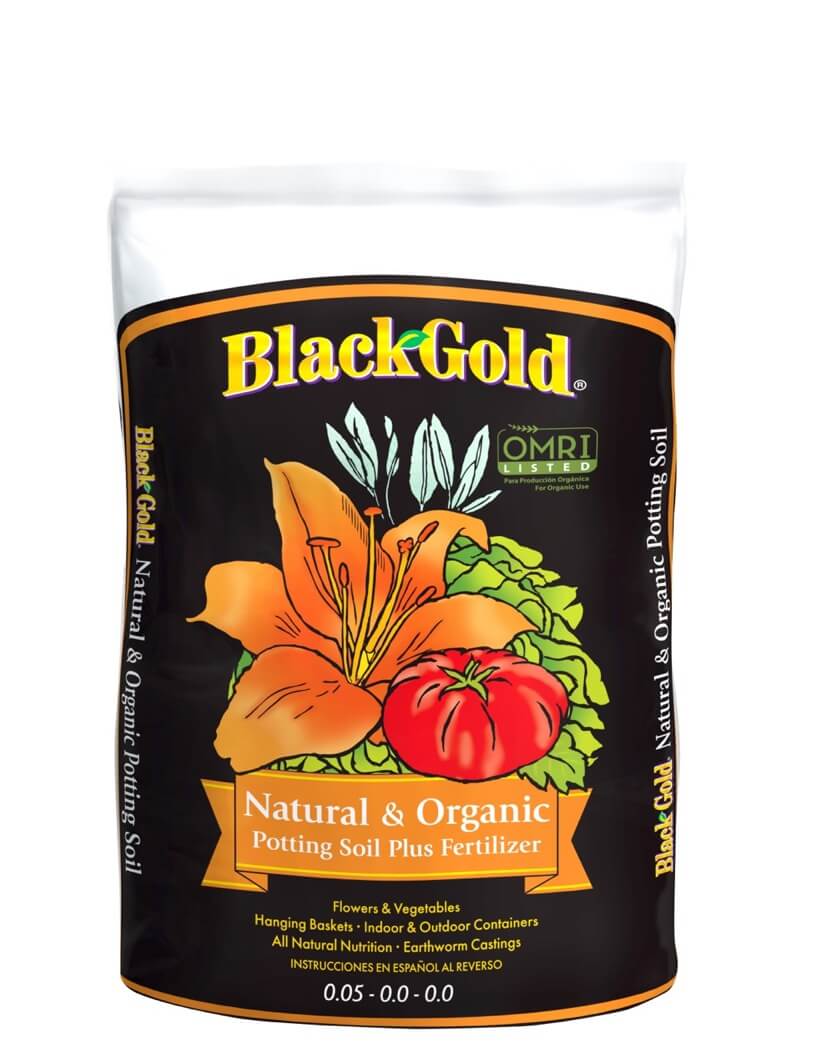
In addition to enjoying summer color from my plants, I always have an assortment of plants that will attract hummingbirds. With the many containers that are on my deck and the surrounding garden area, I always select some plants that are known to be hummingbird magnets.

It is a delight to sit outside in the evening and watch these magnificent birds zero in on a flower, hover and then draw nectar. It is also fun to see how territorial they are and so very protective of their space. It is quite common to see them swoop down on a bird that does not “belong” and chase it away. I have even seen hummingbirds perch on a nearby branch and guard their favorite plants. In my garden, I do not artificially feed hummingbirds but rather rely on them to supply their food needs from the plants I provide. This method certainly seems to work because we always have abundant hummingbirds in our garden.
It is a double bonus when a favorite plant of mine is also a favorite of hummingbirds and most Salvia fit into this category. On our deck, there is always at least one container of Salvia guaranitica ‘Black & Blue’ as it is a true hummingbird magnet. A new variety for me this year is Salvia guaranitica ‘Amistad’ which has deep purple flowers. My ‘Amistad’ is in full bloom in a pot and the growth pattern appears to be very similar to ‘Black & Blue’ with the flowers seemingly equal in their ability to attract hummingbirds. When I planted both ‘Black & Blue’ and ‘Amistad’, I used Black Gold Natural & Organic Potting Soil in my containers and mixed in an all purpose fertilizer because of the slow release nourishment it will provide for several months. Both are OMRI Listed for organic gardening.

The flowers from fuchsias have a reputation as being good hummingbird attractants, and it does not seem to matter what their color is. At one time I was under the impression that flower color was important, with bright red or orange flowers being favorites. Perhaps red and orange are preferred colors, but the more I garden the less I think this is the case. I think that my blue and purple salvias prove this point. I also was under the impression that the flower shape needed to be tubular, and while this shape may truly be preferred, I have many plants that are not tubular that still attract hummingbirds.
Begonia ‘Bonfire’ is a wonderful example of a bright orange/red flowering begonia that is very attractive to these birds. I have had a container of Begonia ‘Bonfire’ for the past several years and since it is exposed to wind and sun, I used Black Gold Cocoblend Potting Soil to help prevent the soil from drying out, especially on hot summer days. Begonias tend to have a reputation for needing shade, but ‘Bonfire’ will take a sunny location as long as it is provided adequate moisture. It will flower profusely throughout the summer and into the fall until cold weather arrives.
I always consider hummingbirds as being quite fragile and to avoid the possibility of harm, I do not use any pesticides or insecticides. I would suggest you try to select plants for your garden that tend to be pest free so there is no reason to apply an insecticide. In my garden, I find that salvias, fuchsias and begonias fit into this category.

Do not overlook the fact that while you are supplying hummingbirds with a food source from flowers, they also need a constant supply of clean water. We have several water features in our garden that all provide such a source. One of my favorites is a large water bowl we have at the end of our lawn. It has a re-circulating supply of water that comes up from the center of the pot and gently spills over the sides. On warm summer days, we often see a hummingbird sitting on the rim of the pot with the water flowing over its legs.
A garden should have a mixed venue of plants for foliage, plants for flowers and water features that offer a clean supply of water to create an environment that will encourage wildlife. The sounds of running water and birds can create a very serene space and getting all of these elements together is very simple. Your garden can become a peaceful place for you and your garden visitors while it helps make our Earth a better place.

